'Ad Astra' Review: Brad Pitt Goes Interplanetary in a Stunning Space Epic
Come for Brad Pitt in space, stay for the stunning cinematography.
Warning: There are some mild spoilers for "Ad Astra" in the review below.
It's safe to say that "Ad Astra" is probably not the science fiction film you think it is. Anyone expecting "Independence Day" or some such holiday blockbuster might be disappointed, but any fan of art expressed through cinema, won’t be.
The movie stars Brad Pitt as Major Roy McBride: super cool under pressure, pride of Space Command and son of legendary astronaut H. Clifford McBride, played by Tommy Lee Jones.
Clifford McBride was the first human to reach both Jupiter and Saturn and a veteran of several deep space missions, which made him the perfect candidate to lead the Lima Project — a deep, deep space mission that would put a team in orbit around Neptune, beyond the influence of the Sun's radiation, to scan the universe for extraterrestrial intelligence.
Watch: See a Sneak Peek of 'Ad Astra' Moon Action!
Video: Brad Pitt Talks 'Ad Astra' with in Space (Video)
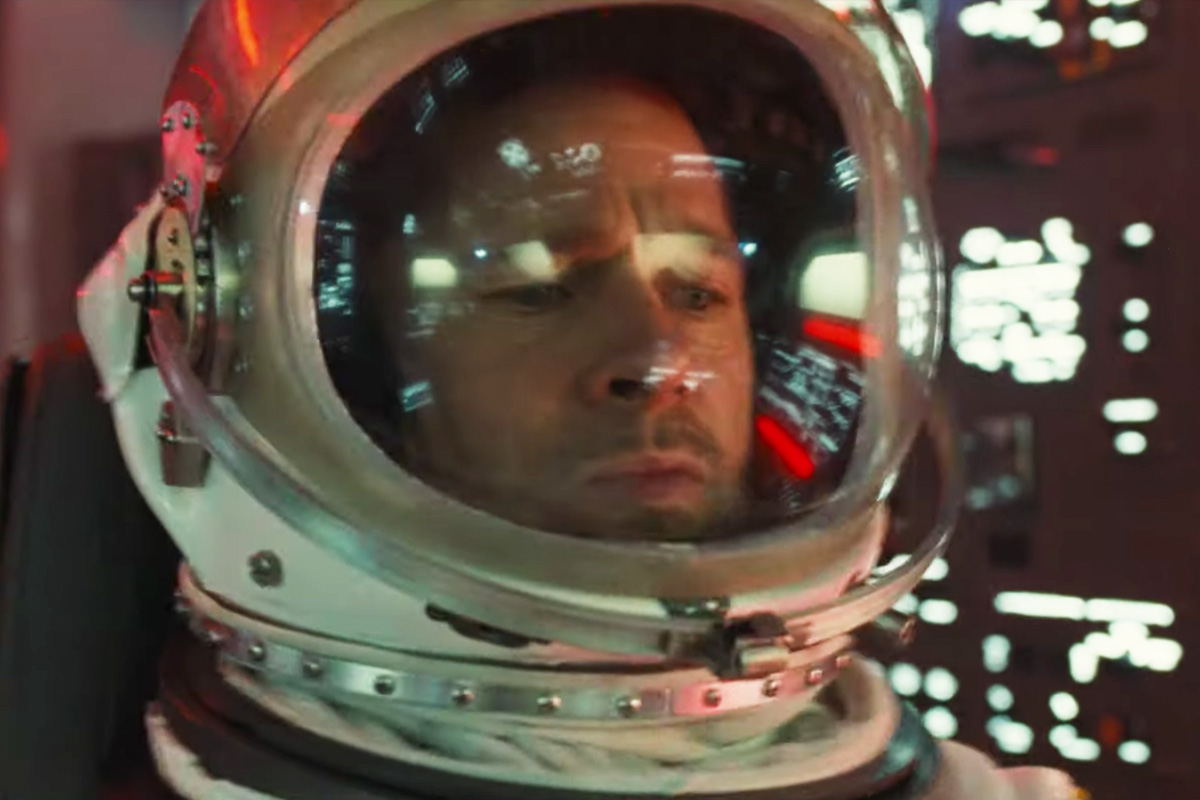
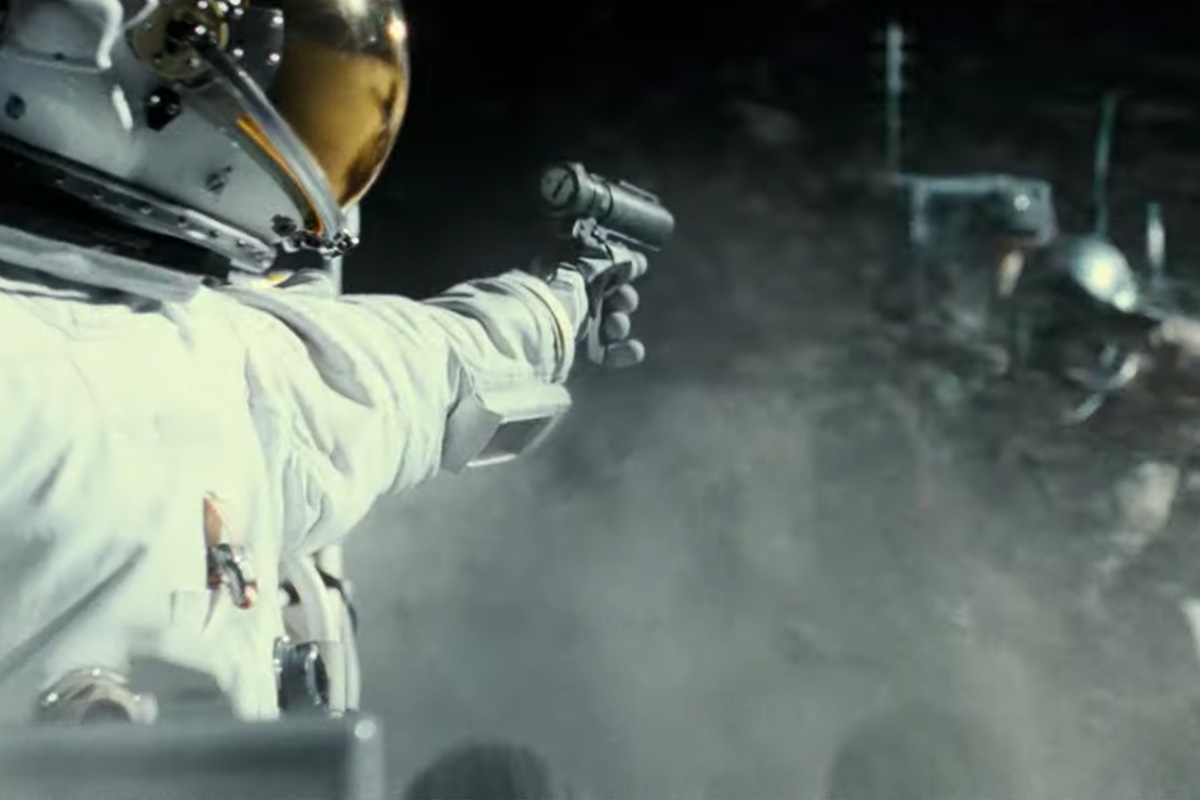
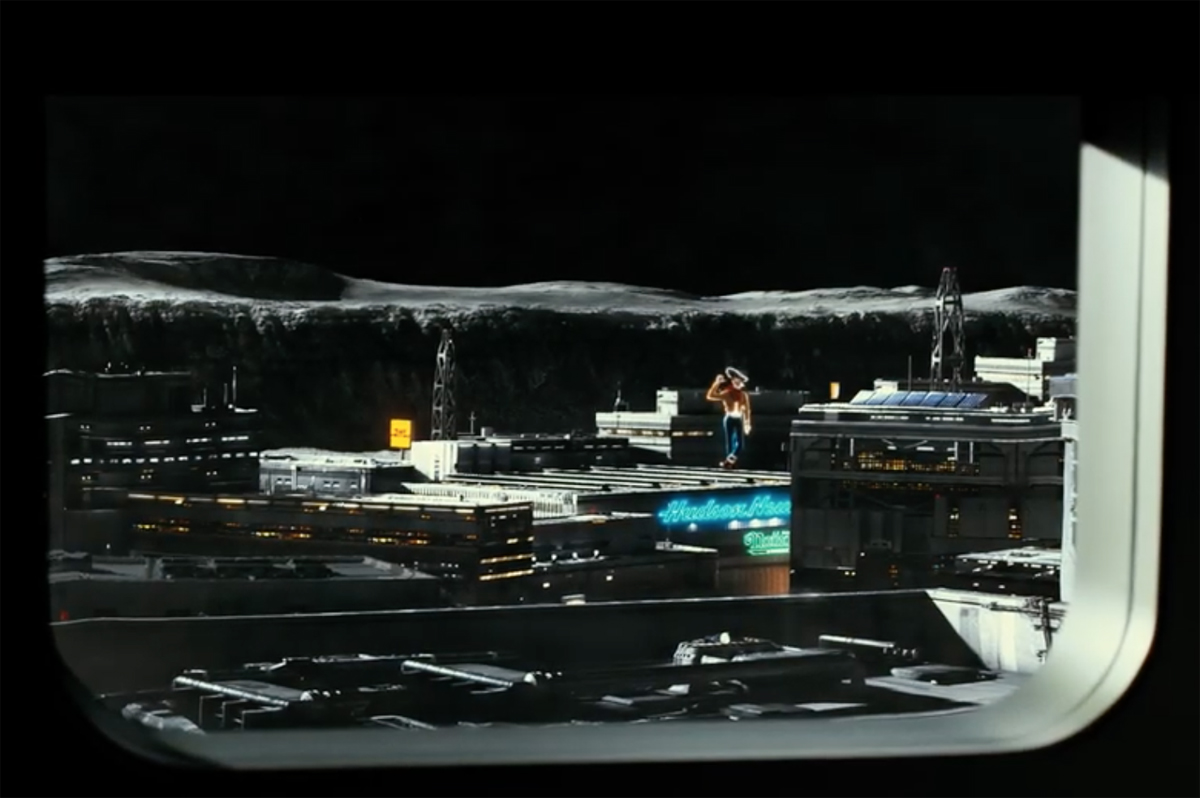
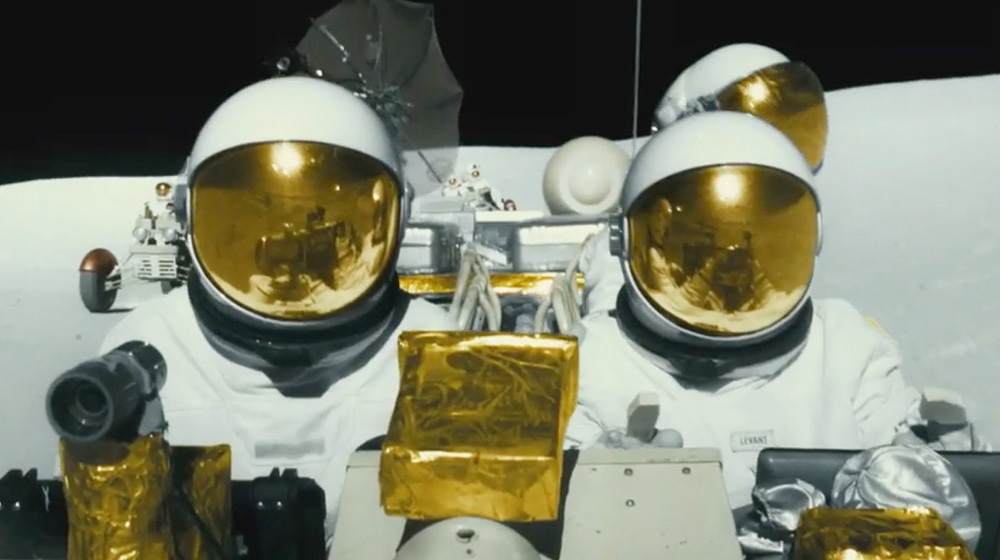
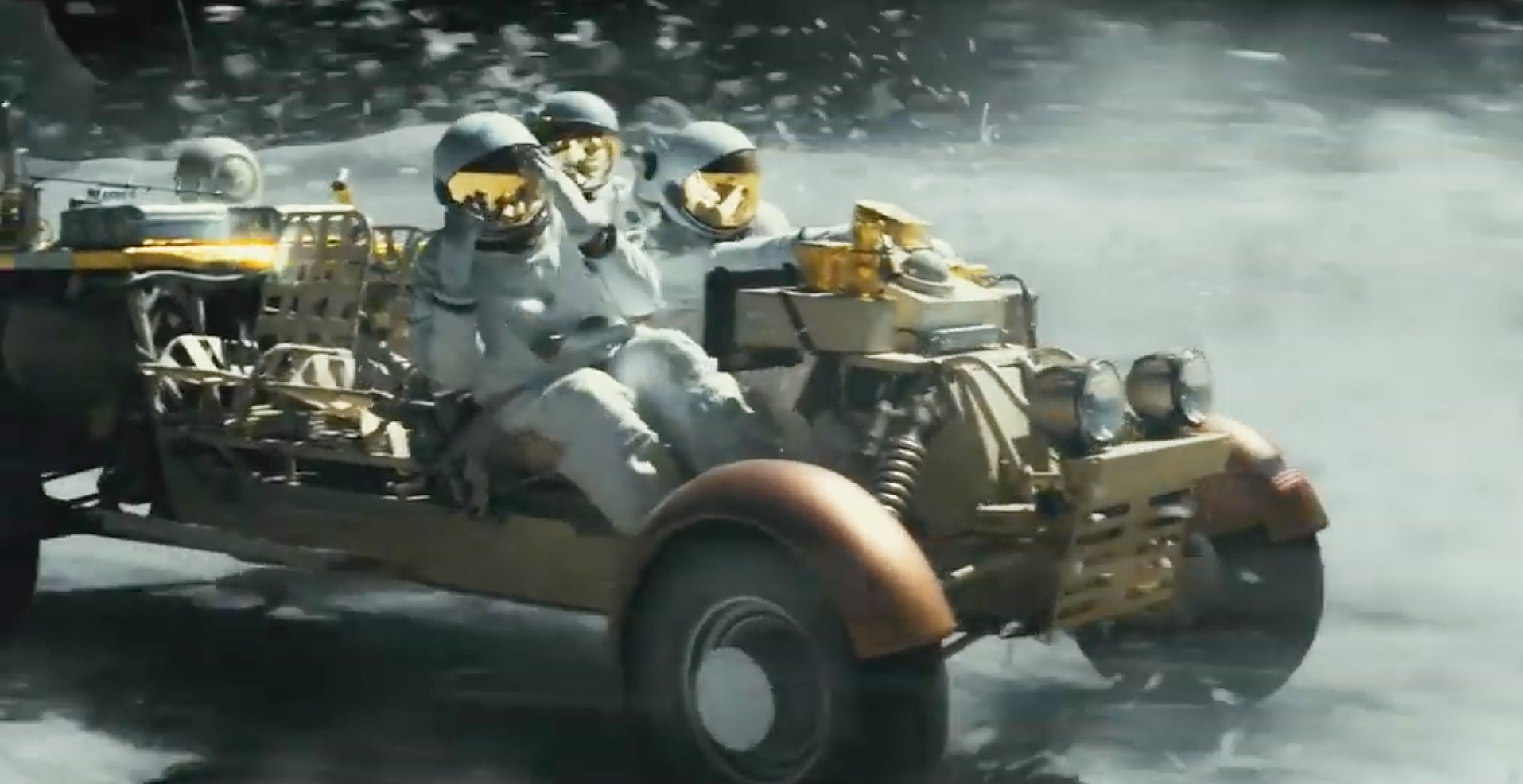

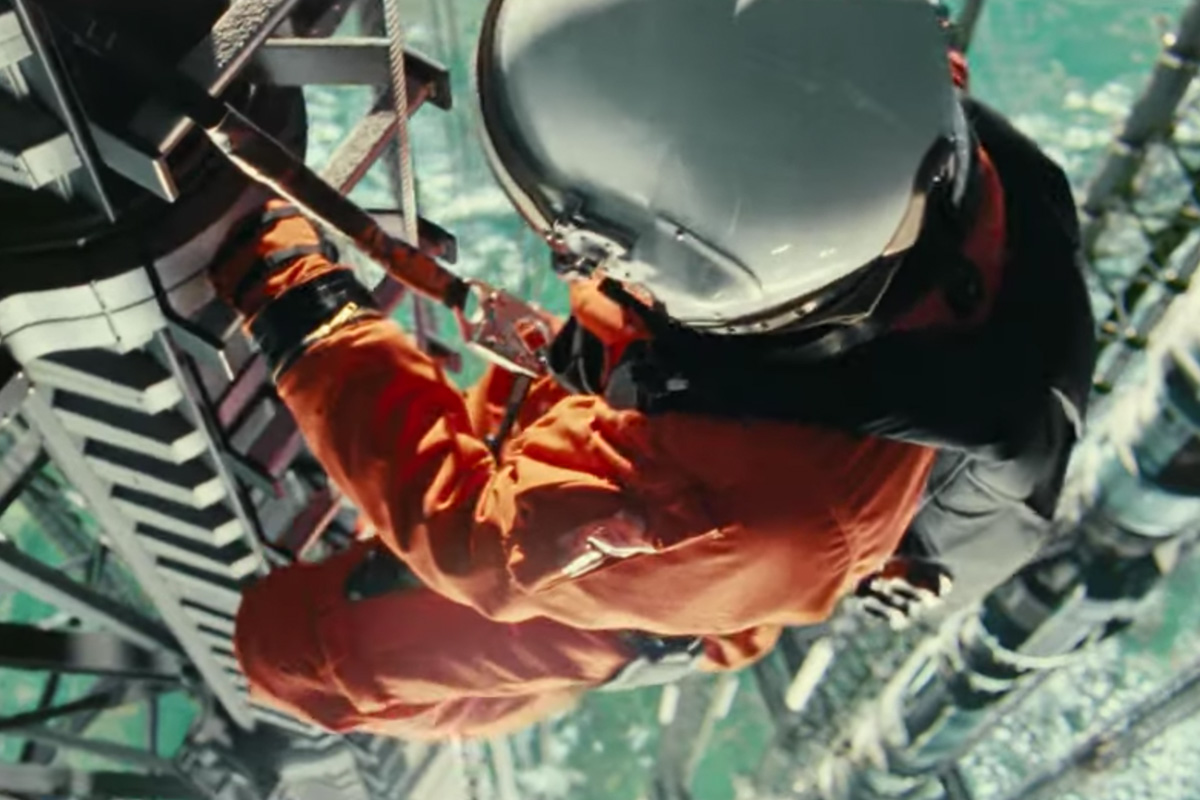
Unfortunately, all contact with the mission was lost some time ago and the team is considered at the very least to be missing in action. That is until some strange energy pulses, like weaker and semi-repetitive gamma-ray bursts, strike Earth, causing catastrophic destruction. Referred to as the "Surge," these bursts have been deemed to come from the neighborhood of Neptune. Thus Pitt is called upon to travel to Mars and send a series of messages by focused laser transmission in an attempt to make contact with his father.
The movie is set in the near future, but it doesn't quite seem to successfully cement portraying futuristic technology whilst incorporating an extension of issues we currently have with space exploration. For example, when Pitt is sent freefalling from — what appears to be a space elevator as it's struck by the surge and explodes — we later find out wasn't a space elevator, but actually a giant radio antenna that extends from the planet's surface to low-Earth orbit. If the materials exist to build this, why hasn't a space elevator been built to remove the need for expensive and dangerous rocket launches?
Get the Space.com Newsletter
Breaking space news, the latest updates on rocket launches, skywatching events and more!
Related: 'Ad Astra' Sneak Peek: Moon Rover Chase Against Space Pirates
There's a pretty impressive looking moon base too plus a permanent settlement on Mars, not to mention some kind of ion-Epstein-warp-quantum-hyper-drive propulsion system that's capable of getting a vessel to Neptune in just 84 days. Voyager 2 took about 12 years.
Sadly then, some of the smaller details prevent a full cinematic immersive experience. Leaving the one-sixth gravity conditions on the moon aside — yup, that old chestnut — some interesting issues are touched upon, like the fact that there are conflicts over lunar territories and a Virgin Atlantic blanket and pillow cost $120 on the flight from Earth to the moon. During the "long" flight to Neptune, Pitt uses electro-stimulation to keep his muscles working, which was a nice touch, although quite what the direct stomach ingestion valve was all about wasn't adequately explored. (My editor thinks it's a feeding tube to let him sleep through the trip.)
And therein lies the problem; in some instances a great deal of attention has clearly been paid to get the details right and at other times, it hasn't.
Related: Epic 'Ad Astra' Trailer: Moon Buggy Chase and Outer Solar System
Director James Gray said in an interview at the Toronto International Film Festival that "Ad Astra" will feature "the most realistic depiction of space travel that's been put in a movie."Gray also described the film as "sort of like if you got 'Apocalypse Now' and '2001' in a giant mashup and you put a little [Joseph] Conrad in there."
The "Apocalypse Now" vibe is undeniable, down to an almost parody of some iconic scenes as Pitt watches the last recordings his father ever made and asks, "What did he find out there ... in the abyss?" And Jones even sounds like Marlon Brando as he says, "The world awaits our discovery, my son."
It is perhaps just a little too similar in places and you can't help but think that Pitt is going to come out with something like, "At first I thought they'd given me the wrong dossier…" Particularly when he's reading his father's list of accomplishments and accolades to himself. Consequently, it's a little distracting at times.
There's also more than a nod to the other influence Gray mentioned, "2001: A Space Odyssey" with some distinct camera angles and Pitt's ongoing psych evaluation that requires him to use phrases like, "I remain confident in the completion of this mission."
Regardless, Gray's most ambitious movie to date is a stunning spectacle and cinematographer Hoyte Van Hoytema — whose credits include "Dunkirk" and "Interstellar" — excels, especially with the scenes on Mars and framing of shots of Ruth Negga within the Martian habitat. The close ups of Pitt too, throughout the duration of the movie, are very visually effective.
Related: 1st 'Ad Astra' Trailer Hints at Interplanetary Action with Brad Pitt
Following some shady shenanigans with Space Command, Pitt must stow away on a ship bound for Neptune to destroy the Lima Project spacecraft, now positively identified as the source of the surge.
He eventually reaches his father and along the way we learn that the Lima Project detected no signs of an alien civilization and thus reinforces the idea that we are in fact alone in the universe.
And while that notion works well in parallel with the deconstruction and subsequent reconstruction of Pitt's character, it is of course no basis to make that assumption definitive. Let's face facts, space is a pretty big place, chances are it's going to require either a wormhole or faster than light travel to reach the nearest indigenous alien intelligence. Ultimately, instead of looking for life up there, he instead concentrates on the life he is connected to down here, back on Earth; namely his wife, played by Liv Tyler, and family.
Related: 13 Ways to Hunt Intelligent Aliens
In order that some sense of mystery should still be preserved, no revelation will be made concerning exactly how the movie ends. However, we will say this: when Pitt eventually returns to Earth, we desperately wanted his capsule to be opened by a group of apes dressed in black leather and holding rifles.
The screenplay and plot let this movie down considerably, but in the areas where it's lacking, Pitt's soulful, nuanced performance manages to pull it up and just about keep it above water. Not only must Pitt overcome moon pirates, rabid Norwegian space monkeys and the bureaucratic red tape of the government, but also some serious personal issues with his father, who was absent through most of Pitt's life, causing him to reflect on his role in his own family and even wonder whether an unavoidable transmission is taking place as Pitt seemingly becomes more like his father.
Factor in the stunning photography and this is a movie that's certainly enjoyable, but leaves you feeling that so much more could've been accomplished.
- Epic 'Ad Astra' Trailer Features Moon Buggy Chase and Outer Solar System
- 2nd 'Ad Astra' Trailer Teases More Spectacular Sci-Fi Starring Brad Pitt
- 1st 'Ad Astra' Trailer Hints at Interplanetary Action with Brad Pitt
Follow Scott Snowden on Twitter. Follow us on Twitter @Spacedotcom and on Facebook.
Join our Space Forums to keep talking space on the latest missions, night sky and more! And if you have a news tip, correction or comment, let us know at: community@space.com.
When Scott's application to the NASA astronaut training program was turned down, he was naturally upset...as any 6-year-old boy would be. He chose instead to write as much as he possibly could about science, technology and space exploration. He graduated from The University of Coventry and received his training on Fleet Street in London. He still hopes to be the first journalist in space.










